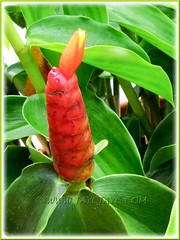My sis Rose makes the traditional Zhung Zi eaten during this Duan Wu festival.




| Life
is what you make it – and All Black rugby legends know all about making
the most of what they’ve got, which is why they’re inspiring Kiwi kids
to take their dreams to the next level, with stories to read around the
breakfast table as part of the new Weet-Bix Dare To Dream Collector Card
series. All Black Israel Dagg says when he was a youngster there wasn’t a lot of spare cash for the latest sporting gear so he and his siblings improvised. “One of the best things we used for a rugby ball was my brother’s girlfriend’s fluffy rabbit slipper. That slipper became the centre of hundreds of exciting and fierce backyard test matches - even when we did eventually find our rugby ball!” he says. “The pink rabbit slipper is proof that as kids you don’t need all the latest gear to succeed and achieve your dreams - you just need a big imagination,” says Dagg. “We didn’t have all the fancy equipment but that didn’t stop us, it taught us to make the most of what we had. The slipper was soft on the foot, went pretty far and didn’t smash any windows - which also kept Mum happy!” says Dagg. Dagg says as a child, becoming an All Black seemed like a faraway dream. “I thought, ‘How could a kid with a pink slipper for a ball make it into the greatest rugby team in the world?’. That’s why the Weet-Bix Dare to Dream campaign is amazing, because it allows kids the chance to dream. When I look back, I know that it’s really all about making the best of whatever you have and having as much fun as you can. That’s how I got here,” says Dagg. Weet-Bix has been the breakfast of choice for Kiwi kids and their families for generations. And now selected packs come with premium quality cards featuring stories from individual All Blacks about the defining moments in their early years, and how they didn’t need the best of everything to reach their potential – just a dream and a little imagination! For All Black Ryan Crotty, being gifted a pair of Andrew Mehrtens’ rugby socks and kicking tee while being ball boy for the Canterbury rugby team proved to be a defining moment. “I was so chuffed to be picked as a ball boy and get to see my heroes up close every week – then to be given Andrew Mehrtens’ socks, I thought I was the luckiest kid alive.” “I wore those socks to every training and would spend hours practising my goal kicking with my prized socks on, pretending I was Andrew Mehrtens. I practised so much in those socks that they eventually had no feet left in them!” says Crotty. Crotty says it was his dream to be an All Black from the time he was seven years old. “And the thing was, I really believed I could be. My strong self-belief came from Mum and Dad, who were the best role models a kid could ask for.” “There’ll inevitably be people along the way who’ll laugh at you and tell you you’re too small, or not good enough, or you can’t do it - but if you believe in yourself and work hard at those dreams, anything is possible,” he says. “It is so important to have dreams and goals and inspirations - and these are also essential things for us to pass on to younger generations, which is why Weet-Bix Dare to Dream is such a great initiative.” The premium quality cards will be available in specially marked packs of 750g and 1.2kg of Weet-Bix from May |
|

 The true reddish-orange flowers with inconspicuous orange-yellow labellum are edible and will peek out one at a time from between the red bracts, lasting for only a day per flower.
The true reddish-orange flowers with inconspicuous orange-yellow labellum are edible and will peek out one at a time from between the red bracts, lasting for only a day per flower. 



